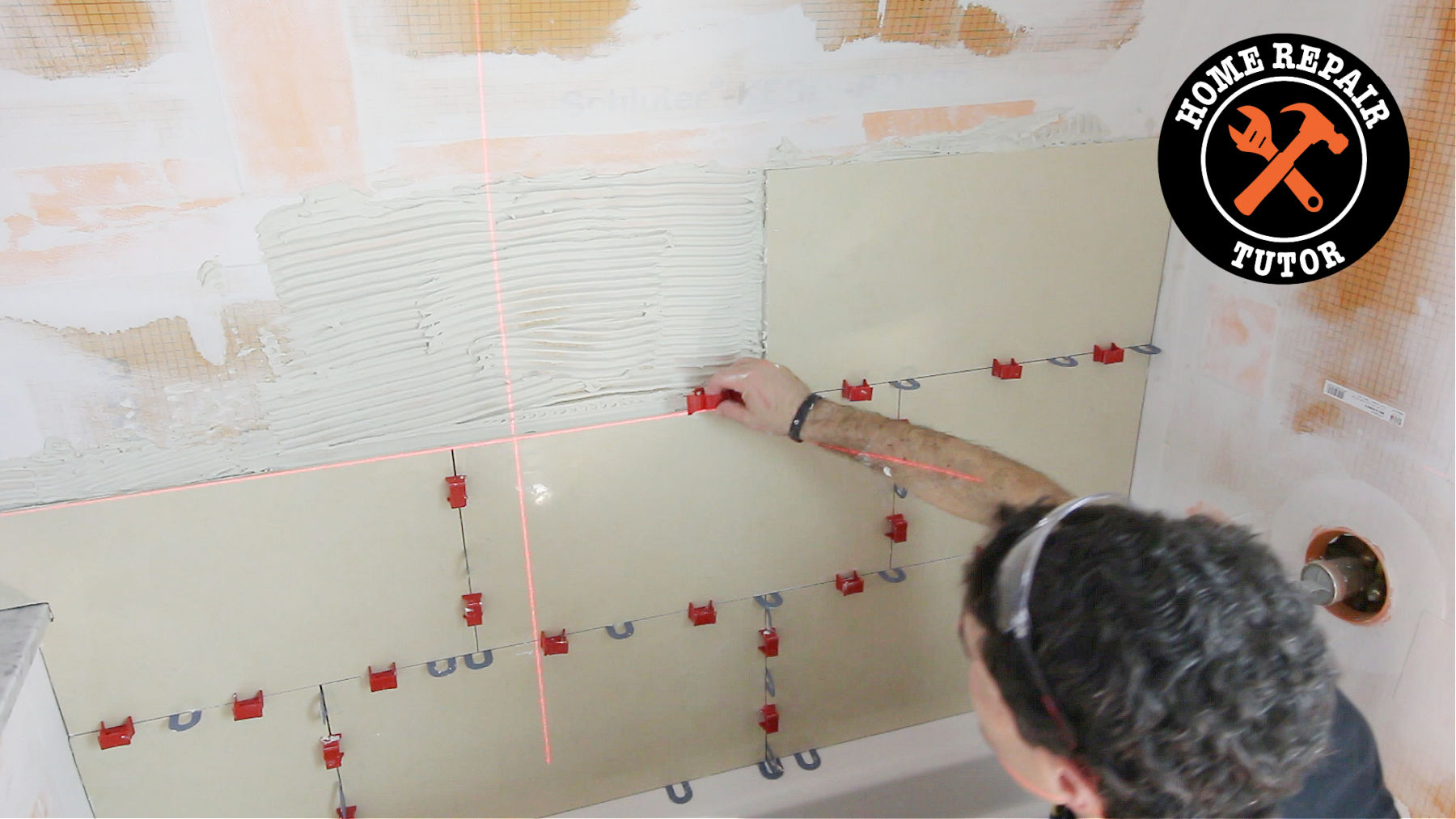Learning how to tile a shower wall isn’t hard…but it does require preparation.
Today we share 9 quick tips that’ll make your project easier and get you great results.
In the end, I promise you’ll feel more confident tiling a shower and guess what, if you have any questions we’ll answer them!
Let’s get started.
Tip #1: Check Shower Stud Walls
Before you do anything it’s best to check the stud walls are plumb and level.
Take a 4-foot level and place it across all the studs. Do this vertically, horizontally, and diagonally.

If the studs aren’t plumb and level, the waterproofing won’t be either. This in turn will lead to tiles looking wonky, particularly at the corners.
How do you fix studs?
The easiest method is to sister a second stud to the one that’s off-kilter or crooked.
Attach the new stud to the old one with 3-inch deck screws or nails. Then check that it’s plumb and level.
Tip #2: Use Waterproofing Material Behind Tile
It’s critical to use some type of waterproofing material behind tile. There are many ways to waterproof a shower.
But one of my favorite methods is KERDI-BOARD on the stud walls.

Remember one thing about alternatives:
Cement board and HardieBacker are NOT waterproof. They’re water resistant.
As such, they need some type of waterproofing membrane over them, like RedGard.
Here are some waterproofing options:
- RedGard with Cement Board
- ARDEX 8+9 with Cement Board
- Hydroban with Cement Board
- KERDI Membrane with Cement Board
- KERDI-BOARD Panels
- Hydro Ban Board Panels
- Wedi Building Panels
- GoBoard Panels
These are all great options…just don’t throw cement board or HardieBacker on the studs and think you’re done. It takes a bit more preparation than that to prevent mold in your bathroom.
Tip #3: Plan Tile Layout
Once the waterproofing is up, plan the layout of the tile.
A fancy computer program isn’t required to do this – pencil and paper are fine.
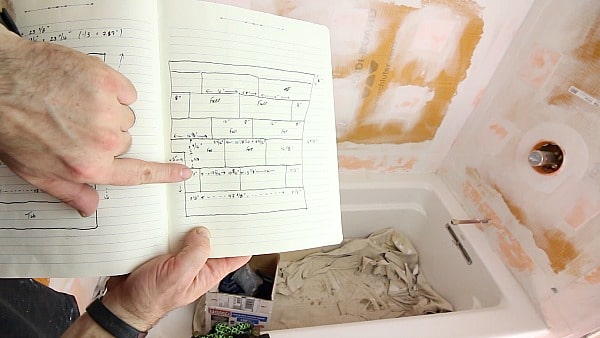
The reason for the layout is two-fold:
- To prevent slivers of tile at the ceiling or corners
- And it will give you a plan to follow
There’s nothing worse than a sliver of tile at the ceiling. Tiles that are two inches or more will look good at the ceiling transition.
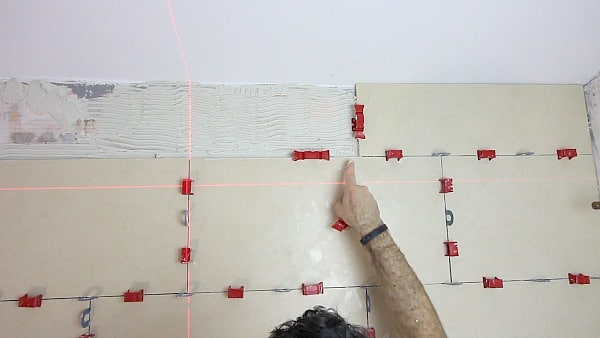
All you need for a good tile layout is an understanding of basic tile requirements and a measuring tape along with your pencil & paper.
Tip #6 will help with the layout, so don’t skip it.
Tip #4: Purchase Quality Porcelain Tile
Don’t get a clay based tile…whatever you do, stay clear of this type of tile.
Why?
If you chip the tile the clay will show.
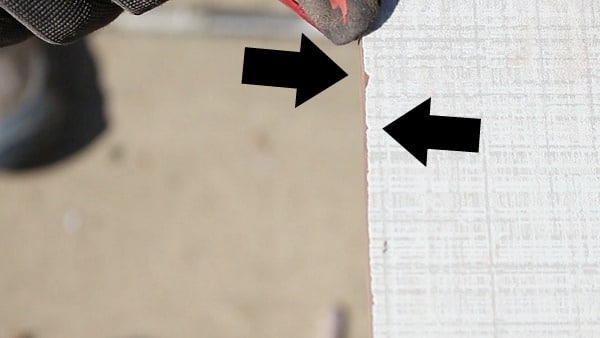
Solid porcelain tile is a better choice.
It’s the same color throughout, so if you have a small chip it will be hard to spot.
Plus, porcelain tiles are constructed a bit better than ceramic tiles. But you should still inspect any tile for imperfections.
Tip #5: Tile leveling Systems for Large Format Tiles
Before I even type anything else…tile leveling systems are optional.
This is a highly debated topic in the tile industry. Some folks like these systems and others say they’re for unskilled tile setters.
Here’s my opinion, which is worth as much as the gum on the bottom of your shoe:
Tiles are getting larger and not always perfect. Even if you’re the best tile setter on this side of the Atlantic Ocean you’ll have a hard time getting tiles flush to each other if they’re bowed or cupped.
Thus, tile leveling systems help with the tile imperfection.
I say give them a shot and see how you like the performance. Then judge all you want.
We like a variety of systems.
Tuscan leveling system makes great products like the SeamClips. Just be sure to get the correct size SeamClip for your tile.
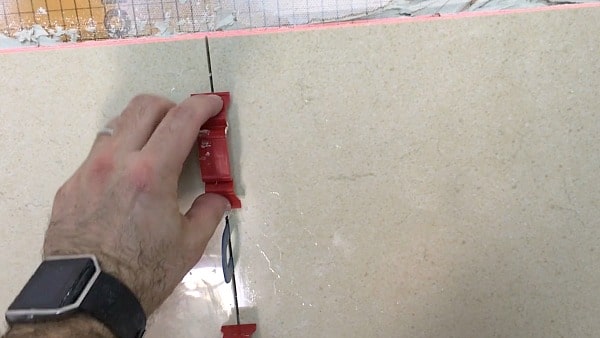
LevTec makes a quality product. Again, make sure to choose the right size based on your tile.
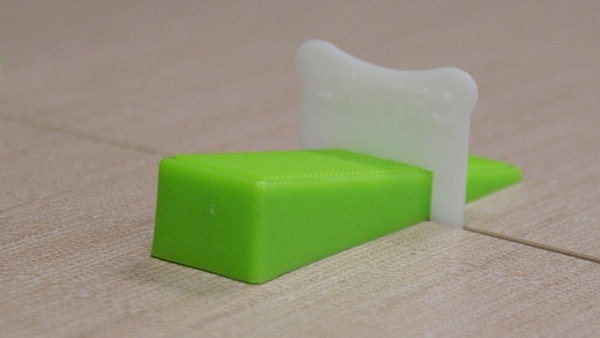
And T-Lock is a wonderful option that has the spacer integrated into the Clip.
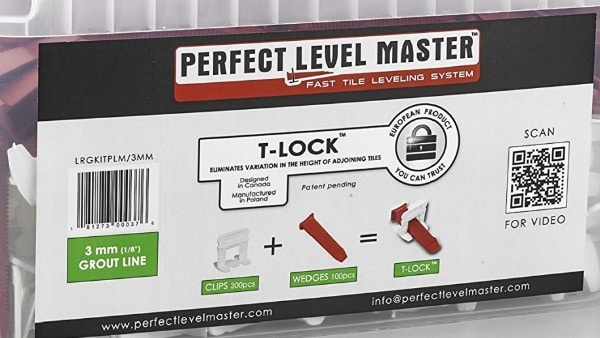
If you’re using a large tile, e.g. 12×24 inches, we recommend trying a tile leveling system and using 1/16″ Clips.
But again, the choice is yours to make.
Tip #6: Stagger Large Format Tiles in Thirds
One way to limit tile lippage is to stagger large format tiles into thirds.
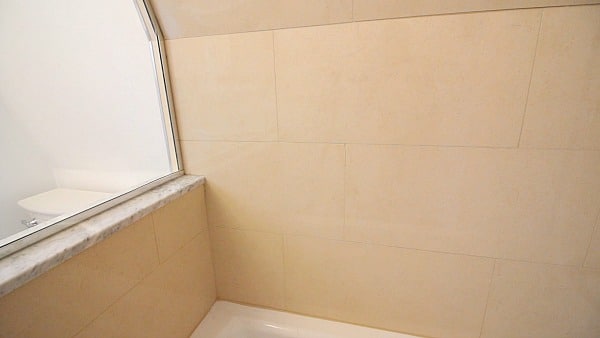
Large tiles tend to cup or bow upward in the middle of the tile.
This in turn creates a slight lip between two adjacent tiles.
The staggering of tiles in thirds helps limit this effect.

Well, that and a tile leveling system 😉
Plus, the Tile Council of North America has specific recommendations on how to set different sizes of tile. We recommend you get their Handbook and read it.
Tip #7: Use Small Grout Joints
Grout joints between 1/8″ and 1/16″ are good because they keep the maintenance low for tile showers.
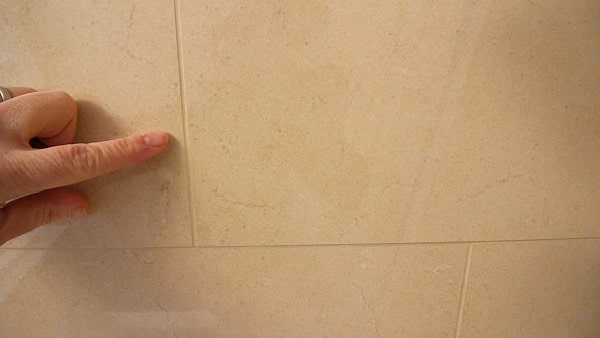
Furthermore, even if you use a 1/16″ grout joint it will likely expand a little. Same thing goes for a 1/8″ joint.
Smaller grout joints just look better than larger ones. But it does mean you’ll have to watch the tile for lippage.
In the end, you’ll prefer shower tile with smaller grout joints. It looks better and again, means less cleaning over time.
Tip #8: Quality Thin-set
I love ARDEX X77 – it’s my go-to for large format tiles and glass mosaics.
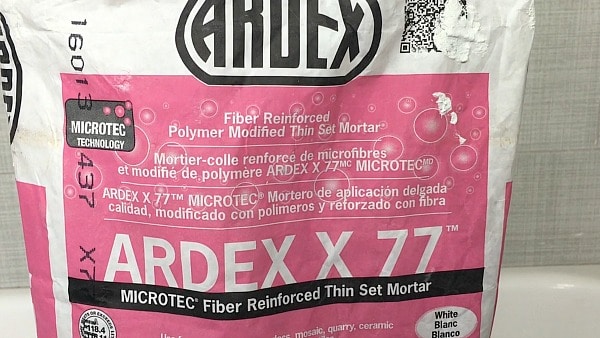
It’s a superior polymer-modified thin-set mortar.
What does that mean?
If you mix X77 per the directions, use the correct trowel size, back butter your tiles and use directional troweling your tiles won’t slide down the wall.
Also, if you’re tiling a ceiling in the shower X77 is a fantastic option. Nobody wants a tile to fall of the ceiling and hurt someone or crack a shower pan tile.
There are a ton of great thin-sets on the market but X77 is still our go-to in the shower.
Tip #9: Quality Grout
There are so many grouts.
Which one should you choose?
We like Bostik’s QuartzLock 2 because it’s pre-mixed, stain resistant, flexible, has color consistency and easy to apply. It’s not cheap but a great option for tile walls.
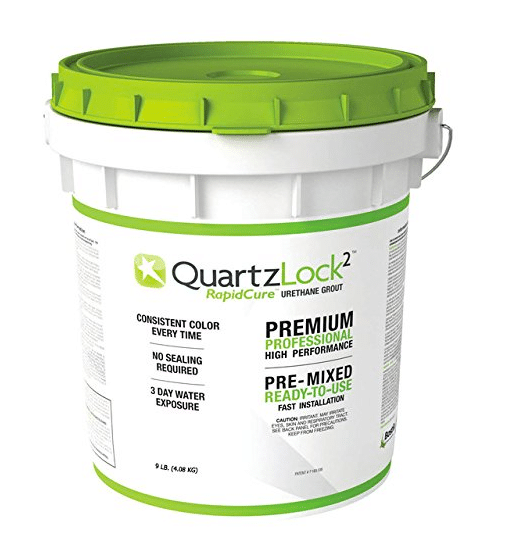
Mapei’s Keracolor U is an unsanded grout. We used it for the shower in our video because the tiles are glazed porcelain and we didn’t want them to be scratched.
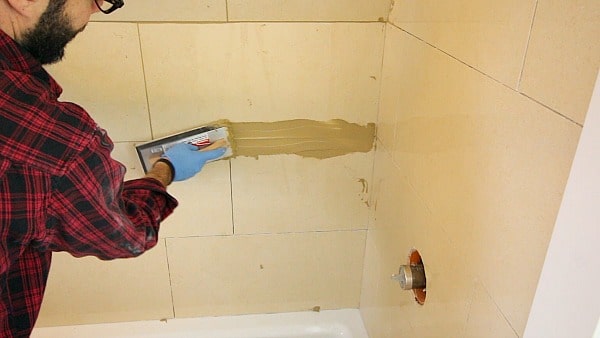
Plus we found a color from Mapei that worked well with the tile.
Mapei also makes Flexcolor CQ, which stands for colored quartz.
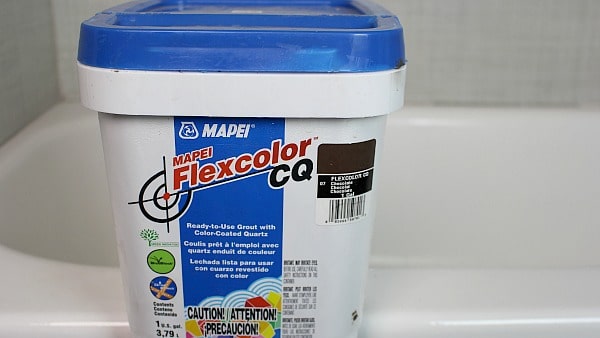
This is a pre-mixed, stain-resistant grout that’s very simple to apply…if you follow the directions.
Always test the grout on the tile to ensure it won’t scratch the surface.
Here are a few more grouts that we like:
- Latricrete’s SPECTRALOCK
- Laticrete’s Permacolor Select
- ARDEX’s WA Epoxy Grout
- Mapei’s Ultracolor Plus FA
Epoxy grouts are fantastic for maintenance-free bathrooms.
Watch our video to see all the tips and a few extras that will help you with your shower tile project
What’s Next
Tiling a bathroom can be a challenge, but the right tools make a huge difference.
Having a step-by-step plan makes your bathroom renovation much easier.
If you’re doing a bathroom remodel and need help, join our Platinum Membership.
I promise you’ll love the tutorials and Personal Coaching.
To learn more tap the button below
Cheers,
Jeff



